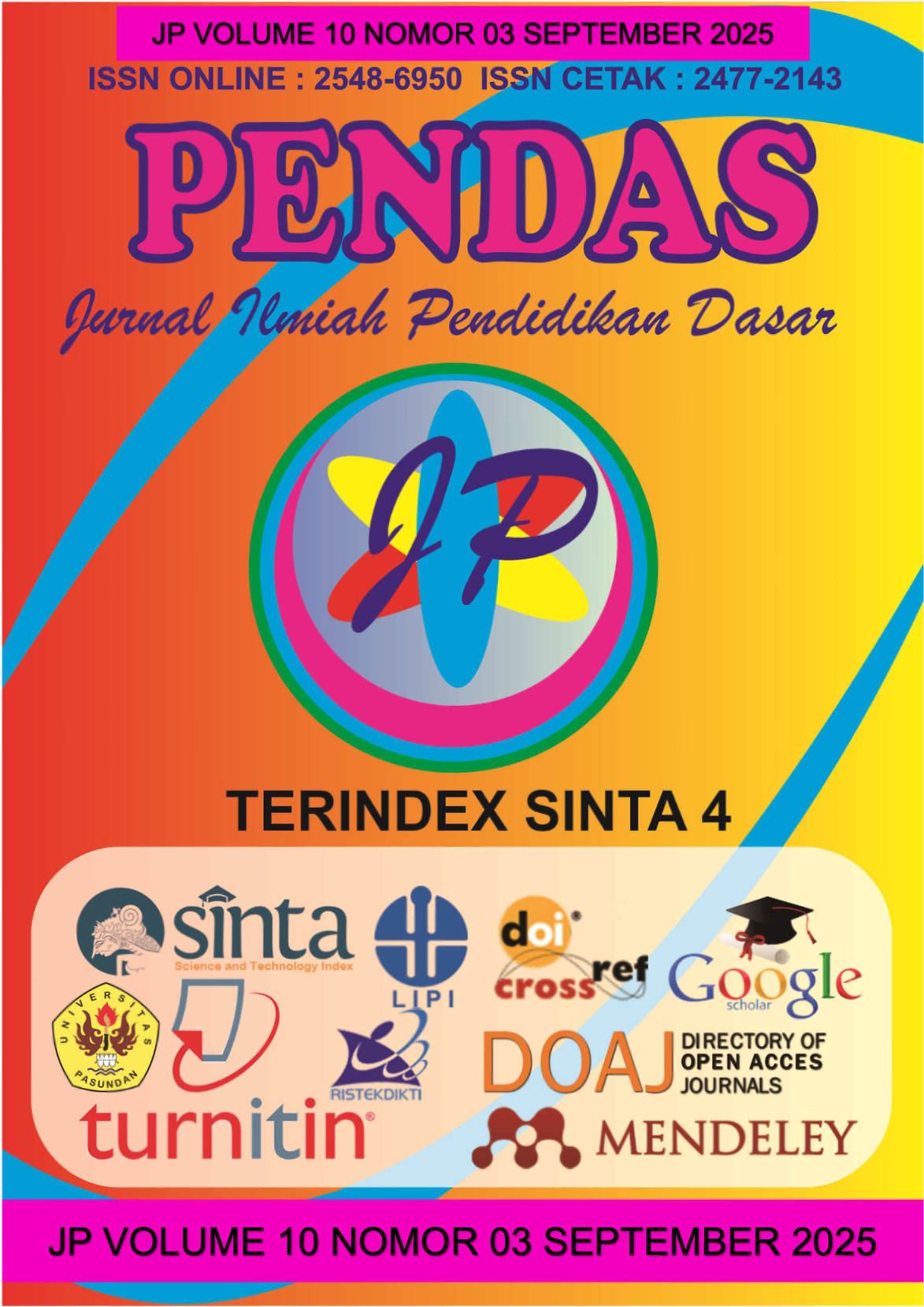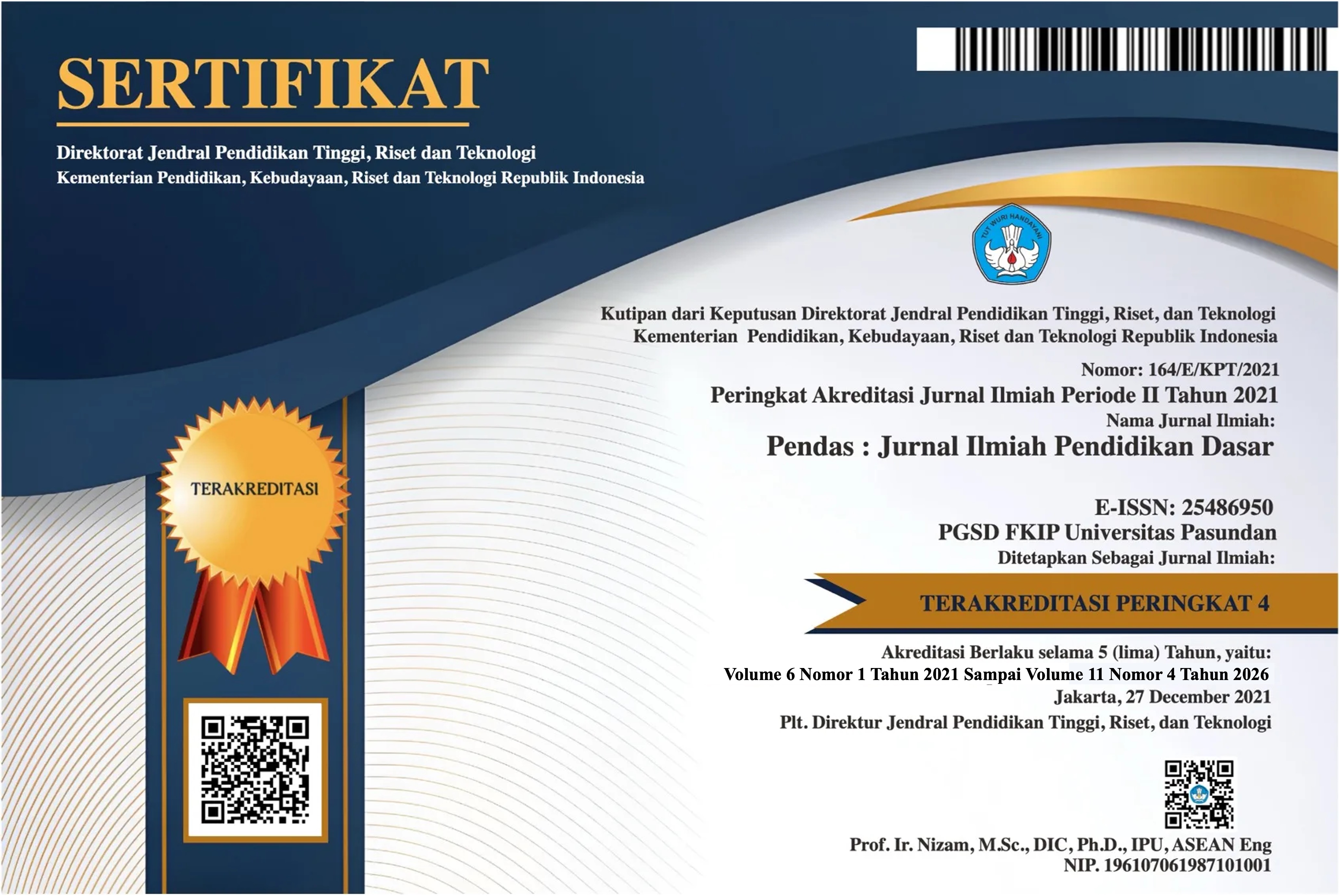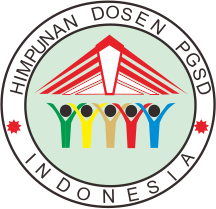IMPLEMENTASI METODE MIND MAPPING DALAM MENINGKATKAN KEMAMPUAN BERPIKIR SIMBOLIK ANAK DI TAMAN KANAK-KANAK ISLAM NIBRAS PADANG
DOI:
https://doi.org/10.23969/jp.v10i03.31900Keywords:
Mind mapping, symbolic thinking, early childhood, early childhood educationAbstract
The low ability of symbolic thinking in children is marked by difficulties in
connecting symbols with real objects, a lack of skills in expressing ideas
symbolically, limited ability to recognize and categorize symbols, weak visual
memory, slow understanding of directions and positions, and minimal creativity in
creating their own symbols. This research aims to describe the application of the
mind mapping method to improve the symbolic thinking abilities of 5–6-year-old
children at the Nibras Padang Islamic Kindergarten. The research approach used
is qualitative with a descriptive type. Data was collected through observation,
interviews, and documentation. The research subjects include class B teachers,
the school principal, and students. The research results reveal that the
implementation of the mind mapping method is carried out systematically,
encompassing the stages of planning, execution, and evaluation. The teacher
designs learning activities based on themes that are close to the children's lives,
such as the theme 'My Vehicle', and utilizes visual media in the form of pictures,
arrows, and symbols that help children connect concrete concepts with symbolic
ones. In practice, children actively engage in creating mind maps with the teacher
acting as a facilitator. The application of this method results in improved ability for
children to recognize, understand, and communicate symbols in a more organized
and creative manner. Thus, mind mapping has proven to be effective in
developing the symbolic thinking skills of early childhood through enjoyable,
visual-based learning that is suitable for their developmental stage.
Downloads
References
Azizah, N. (2024). Strategi
Pembelajaran Anak Usia Dini
Berbasis Perkembangan.
Bandung:
Penerbit Pelita Anak.
Buzan, T.2006. Mind Map untuk
Meningkatkan Kreativitas.
Jakarta:
Kementerian Pendidikan,
Kebudayaan, Riset, dan
Teknologi. (2022). Standar
Tingkat Pencapaian
Perkembangan Anak pada
Pendidikan Anak Usia Dini.
Jakarta: Kementerian
Pendidikan, Kebudayaan,
Riset, dan Teknologi
Republik Indonesia.
Marlina. (2023). Perkembangan
Kognitif Anak Usia Dini.
Jakarta: Pustaka Ilmu Anak.
Nurhayati, S. (2023).
Pembelajaran kontekstual
pada pendidikan anak usia
dini: Strategi meningkatkan
keterlibatan dan pemahaman
anak. Jakarta:
Prenadamedia Group.
Piaget, J. (1962). Play, dreams
and imitation in childhood (C.
Gattegno & F. M. Hodgson,
Trans.). New York, NY: W. W.
Norton & Company.
Polat, Ö., & Aydın, E. (2020). The
effect of mind mapping on
young children’s critical
thinking skills. Thinking Skills
and Creativity, 38, 100743.
Suyadi, (2022). Pendidikan Anak
Usia Dini: Teori dan Praktik.
Jakarta: Prenadamedia Group
Vygotsky, L. S. (1978). Mind in
Society: The Development of
Higher Psychological
Processes. Cambridge, MA:
Harvard University Press.
Downloads
Published
Issue
Section
License
Copyright (c) 2025 Pendas : Jurnal Ilmiah Pendidikan Dasar

This work is licensed under a Creative Commons Attribution 4.0 International License.



















